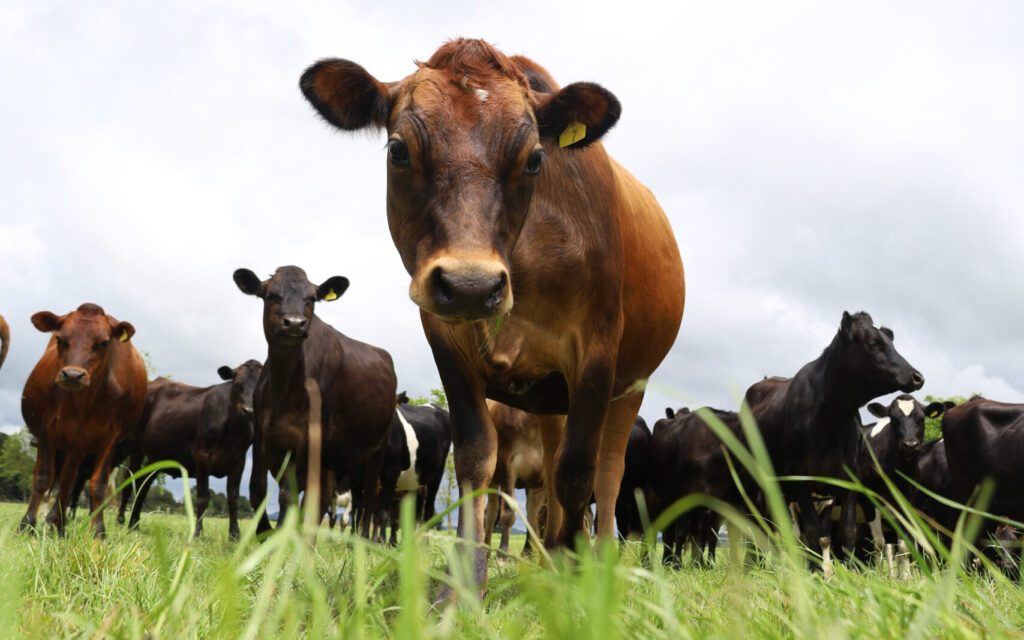When picturing the ideal cow, each of us may have something different in mind. For an Irish grazing system we need to look for efficiency of production from every cow in the herd. That is, a cow who efficiently delivers a high amount of milk solids per kilogram of liveweight, with little maintenance, while quickly getting back in calf year-after-year.
While facing many external pressures, Irish dairy farmers must keep focused on the importance of efficiency – both from our cows and from our farming systems.
Efficiency underpins profitability and is especially important in the face of ever rising input costs and a volatile world market. Genetic gain keeps this moving forward, delivering ever increasing feed conversion efficiency.
Production data and actual liveweight information can be used to help farmers identify the most production efficient cows in their own herd and farm system.
Finding future opportunities in today’s herds
There is an exciting opportunity within our herds right now as we recognise the potential for our future herd! The production and production efficiency variation seen within animals in the same age group in the herd, gives us a glimpse of the potential for whole herd performance in years to come.
LIC quantified this for 3376 NZ herds in a 2023 study of mature (4–8-year-old) cows. The study showed a strong relationship between production efficiency and genetic merit (gBW) at +0.4 kgMS per 1 gBW increase. There is significant variation in performance within herd age groups. The performance difference between the top quartile and the bottom quartile of mature cows within herds averaged 166 kgMS/year, while the genetic merit difference was 64 gBW points, (see Table 1).

The top quartile cows were around 30% ahead of their bottom quartile herd mates for milk production, production efficiency (kgMS per kgLWT), and genetic merit (gBW), revealing the exciting opportunity farmers have to further improve performance, just by breeding and milking more of these top end cows. The proof is there – high gBW bulls breed high production and production efficient cows.
All of this highlights once again the usefulness of milk recording. Combined with liveweight information from annual cow weighing in mid-lactation, farmers can identify the most and the least efficient animals in their herds. The contribution of liveweight to production efficiency isn’t anything new for farmers who have long had their eye on that key metric. They know that larger cows cost more in feed for growth and maintenance. Taking nearly an extra 300 kgDM to feed a 600 kg cow vs a 500 kg cow each year, that’s the equivalent of an extra two silage bales required per cow, per year. Recent Irish research confirms the usefulness of this as a production efficiency measure.
 Actual liveweight data will highlight the most efficient animals in your herd. The ICBF has recently launched a new online tool to calculate efficiency once you’ve entered in your cows’ mid-lactation weights. This will make it easy for farmers to select their most efficient animals for breeding.
Actual liveweight data will highlight the most efficient animals in your herd. The ICBF has recently launched a new online tool to calculate efficiency once you’ve entered in your cows’ mid-lactation weights. This will make it easy for farmers to select their most efficient animals for breeding.
When we’re looking at efficiency, it’s the smaller more productive animals that are most efficient, and these tend to be our crossbred animals. We’ve seen this both in New Zealand and in Ireland.
The value of crossbreeding
While we can breed for efficiency within any breed; Holstein Friesian (HF), Jersey (JE) or Jersey-Holstein Friesian crossbred (HFxJ), it’s the HFxJ group of animals that have proven to be most efficient. In Ireland, research conducted by Moorepark, has shown that HFxJ animals (animals with more than 25% Jersey) produced 8.9% more solids per kgLWT when compared to HF across all parities (1.01 vs 0.92 kgMS per kgLWT).
The HFxJ group also maintained that efficiency into later lactations, whereas the HF hit peak efficiency in their third lactation (0.96 kgMS per kgLWT) and started to decline thereafter.
The end result was that the HFxJ group produced more kgMS per kgLWT across more lactations than the HF group, and they showed a linear increase in efficiency with the proportion of JE genes in the animals. Read the full research article here.

High genetic merit HFxJ cows show the greatest production efficiency and maintain that efficiency for longer. Therefore, crossbreeding is an invaluable strategy to increase efficiency in your herd.
Nevertheless, no matter your chosen breed, higher gBW consistently delivers greater production efficiency. In an LIC 2023 study, similar to the previously mentioned study, more than 840,000 cows with over 200 days in milk in 2022/23, were ranked by quartiles for genetic merit (gBW) within breed and assessed for production and other traits. Again, across every breed or breed mix the top quartile animals outperformed their lower gBW herd mates. On average, they produced more milk solids, were lighter in liveweight and had higher fertility breeding values, with the trend being consistent through the quartiles.
So, it’s clear that using high gBW bulls will increase the efficiency of your herd and help you breed more efficient cows faster. As input costs rise, increased efficiency is vital to continued profitability.
Using herd improvement tools, such as milk recording and capturing mid-lactation liveweights, can help you select your most efficient and fertile cows, so breed them to high gBW bulls and discover even greater levels of efficiency.
Talk to your breeding advisor about how to best unlock greater efficiencies in your herd.



